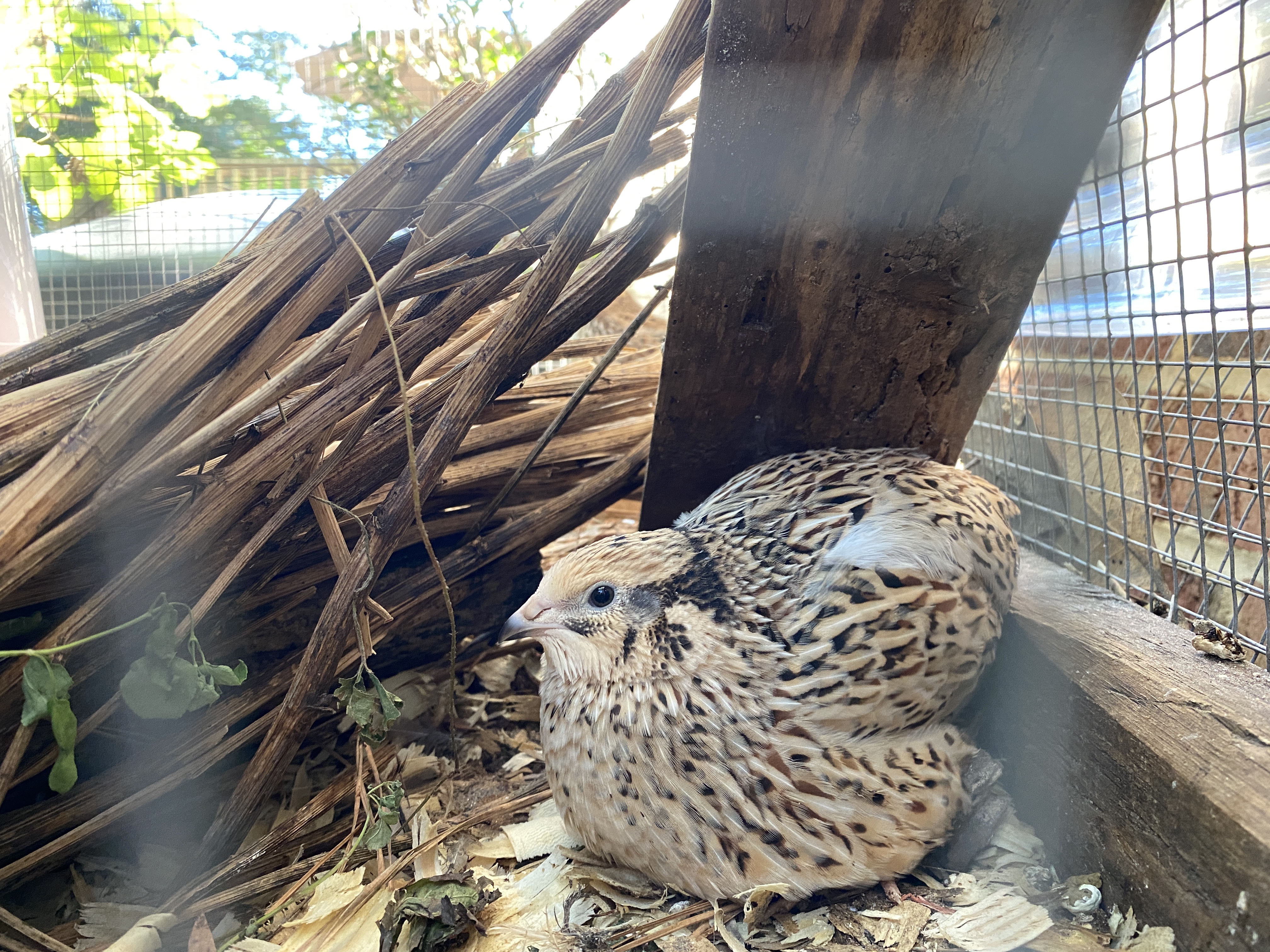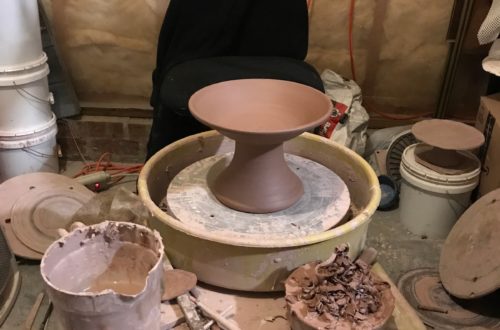Meet the Coturnix Quail
Here at Love Sown Garden (I feel a little ridiculous naming my garden), there is a new flock of feathered friends. I went to the monthly flock swap at The Urban Chicken and came home with six young quail. Why? They were there, and I had a grow-out pen that could comfortably hold them. I honestly had no intention of getting into another kind of animal, but some of my friends have been talking up the ease of raising quail and how wonderful their eggs are.
After I brought the first six quail home, my quail friend looked at my pictures and determined that I had three males and three females, and they were Pharaoh and Italian. After doing a little reading (remember I bought these on a whim), I found that my covey would likely benefit from increasing my numbers. I was providing three square feet of space per bird, when one square foot of bird might actually be better to prevent territorial behavior. I decided the next month I would trade in one of my males and bring home another group of females. Armed with my new ability to feather sex Pharaohs and Italians, this past weekend I brought home three more females and one Rosetta, which I’m crossing my fingers is also female. I won’t know until it starts either dropping eggs or calling.
Meet the Covey:
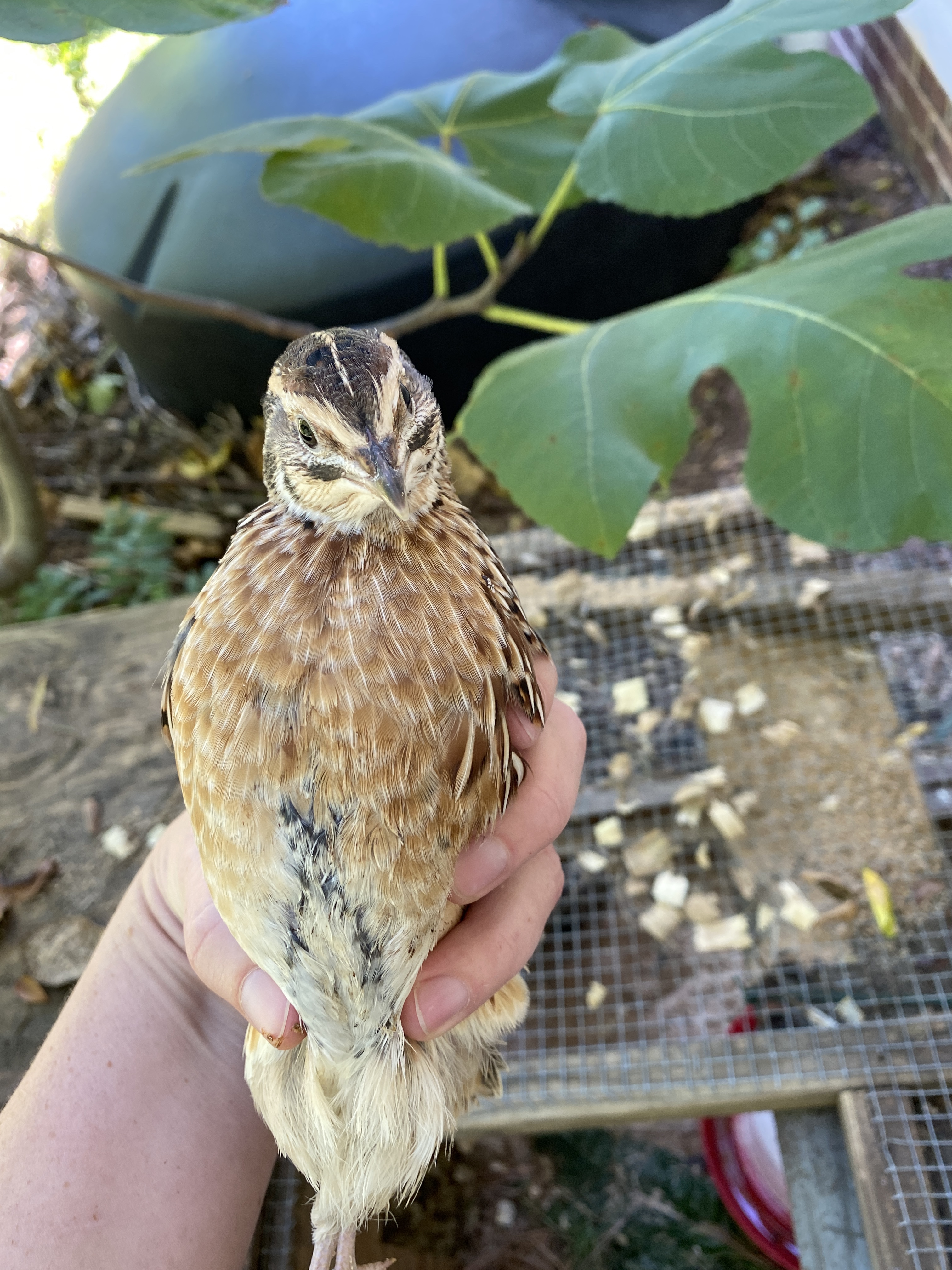
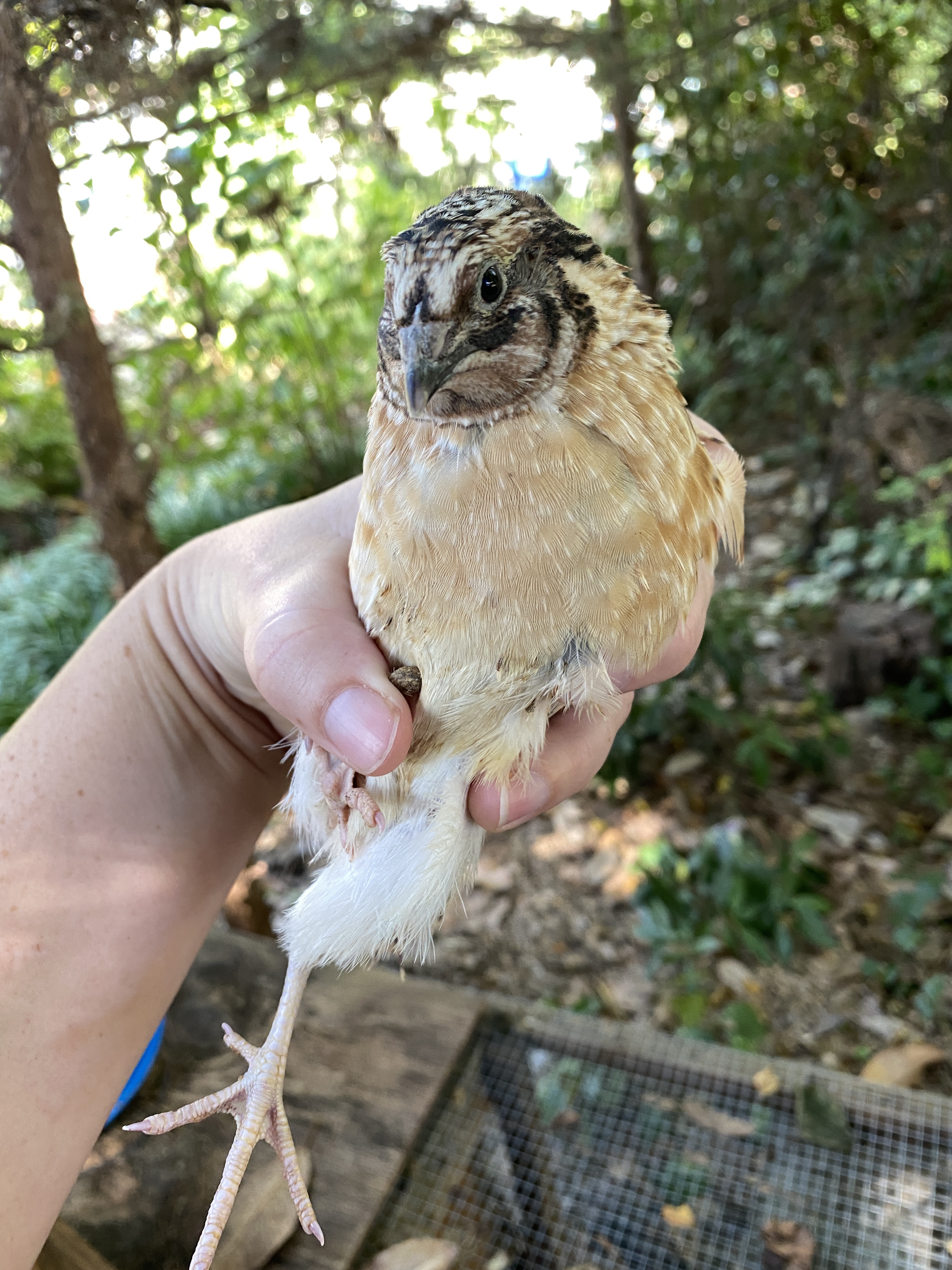
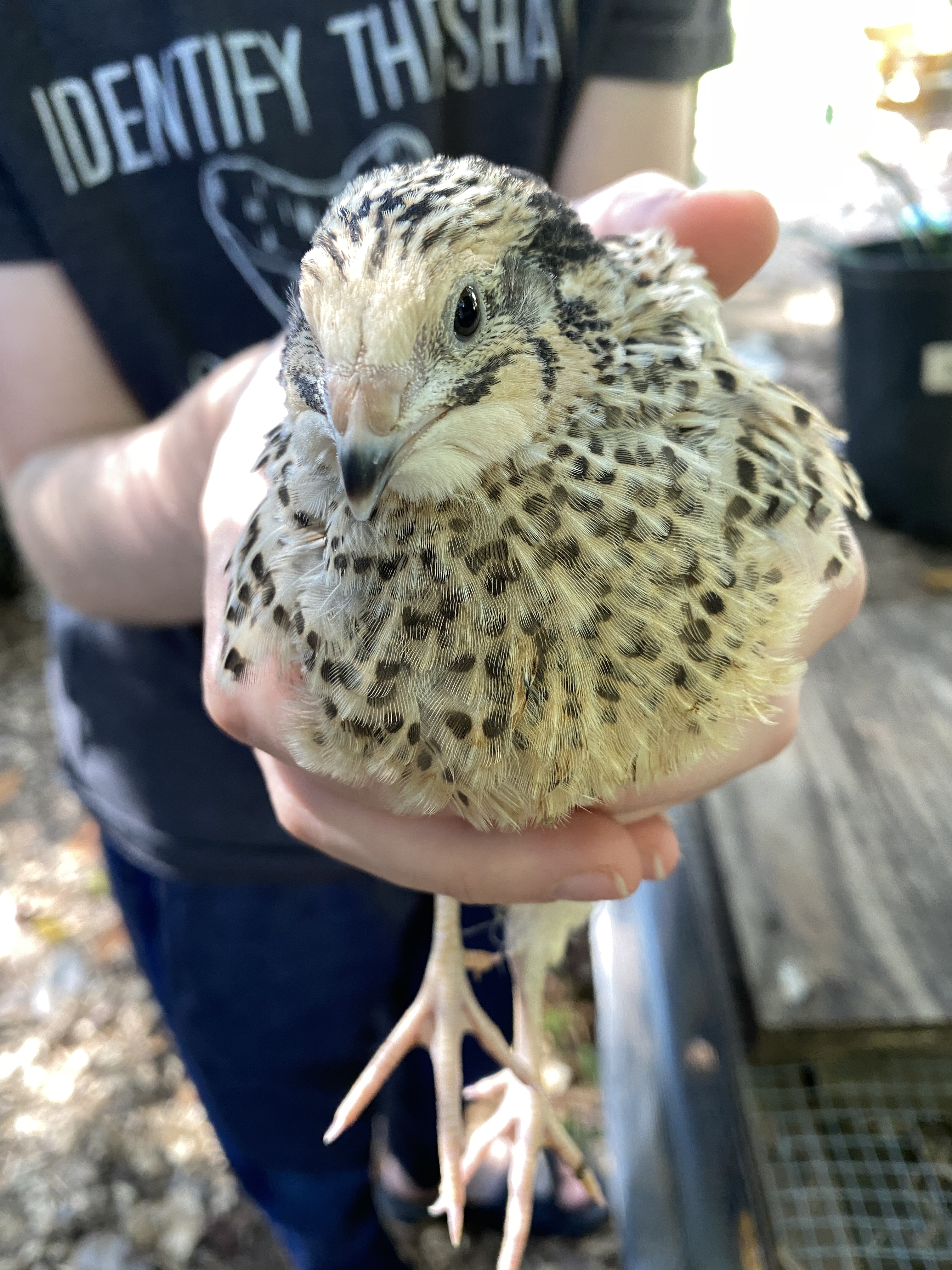
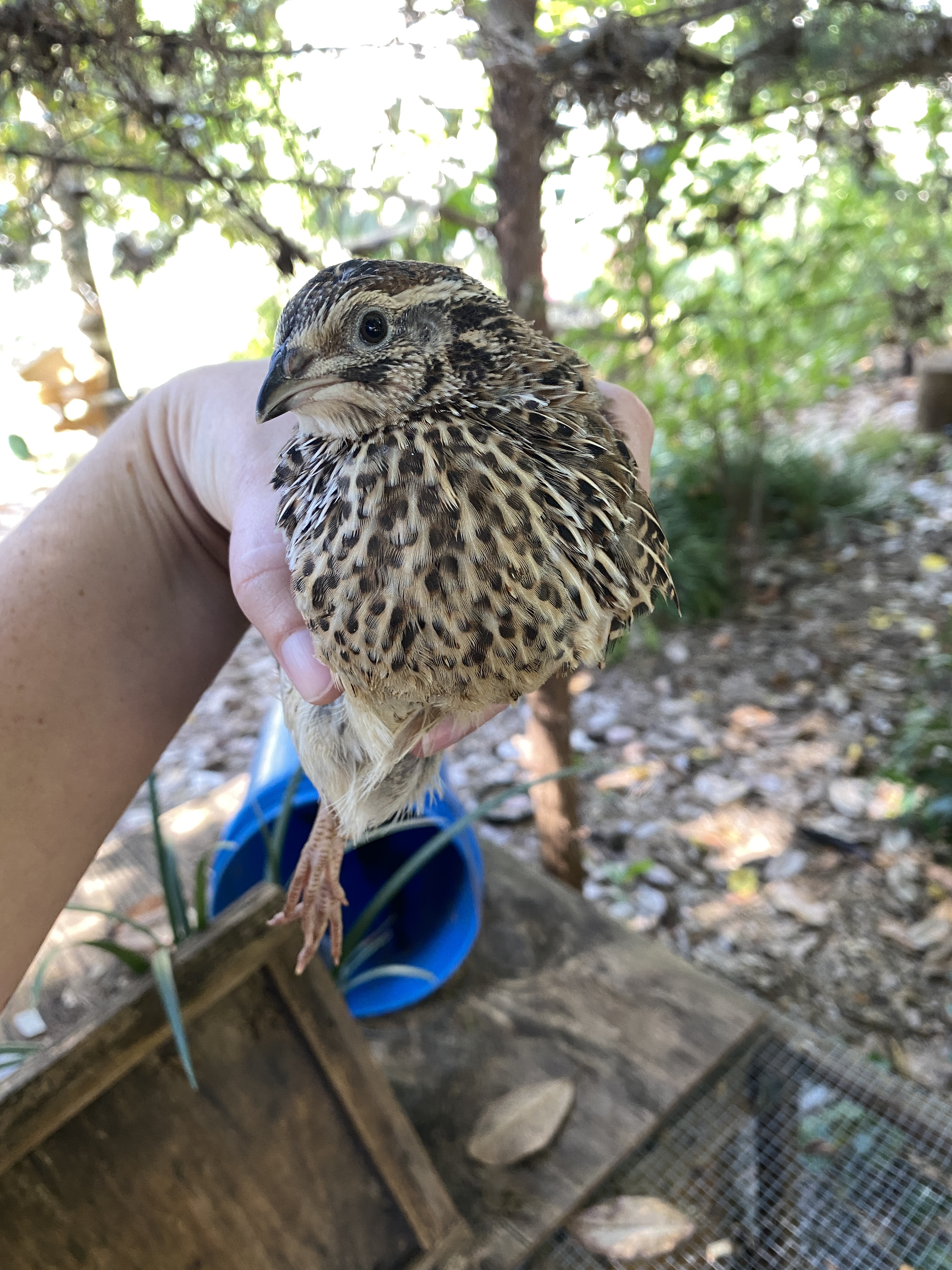
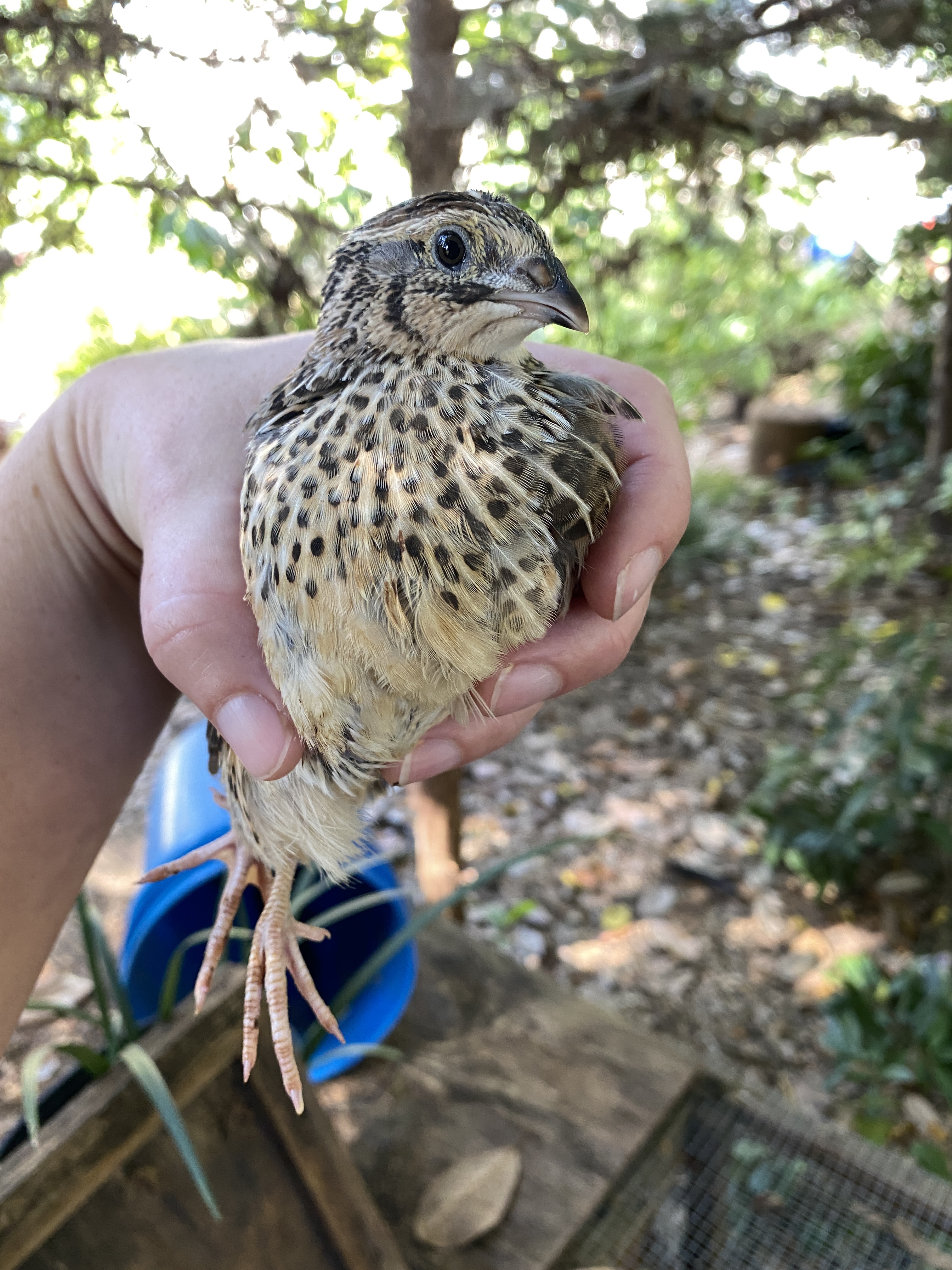
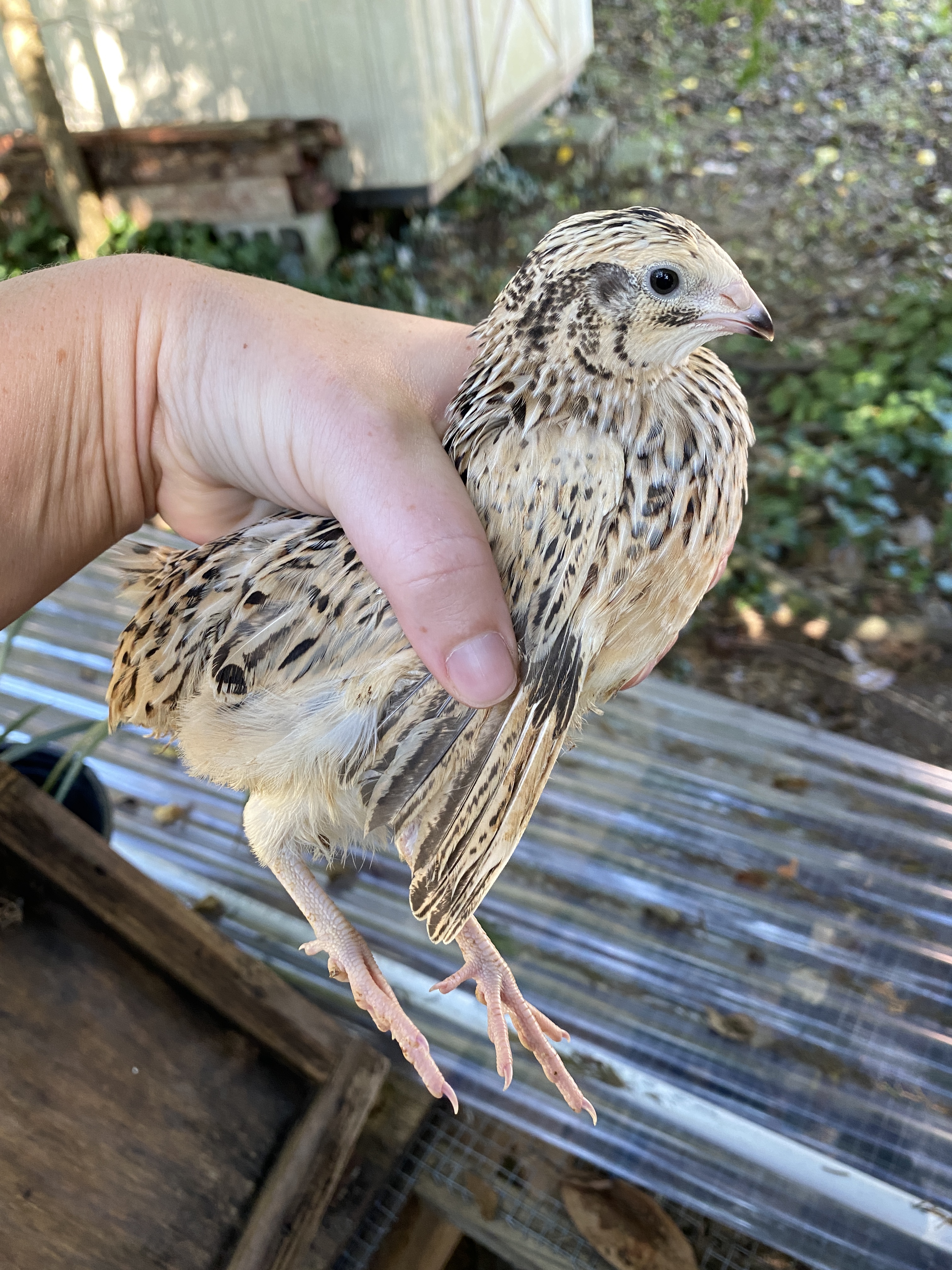
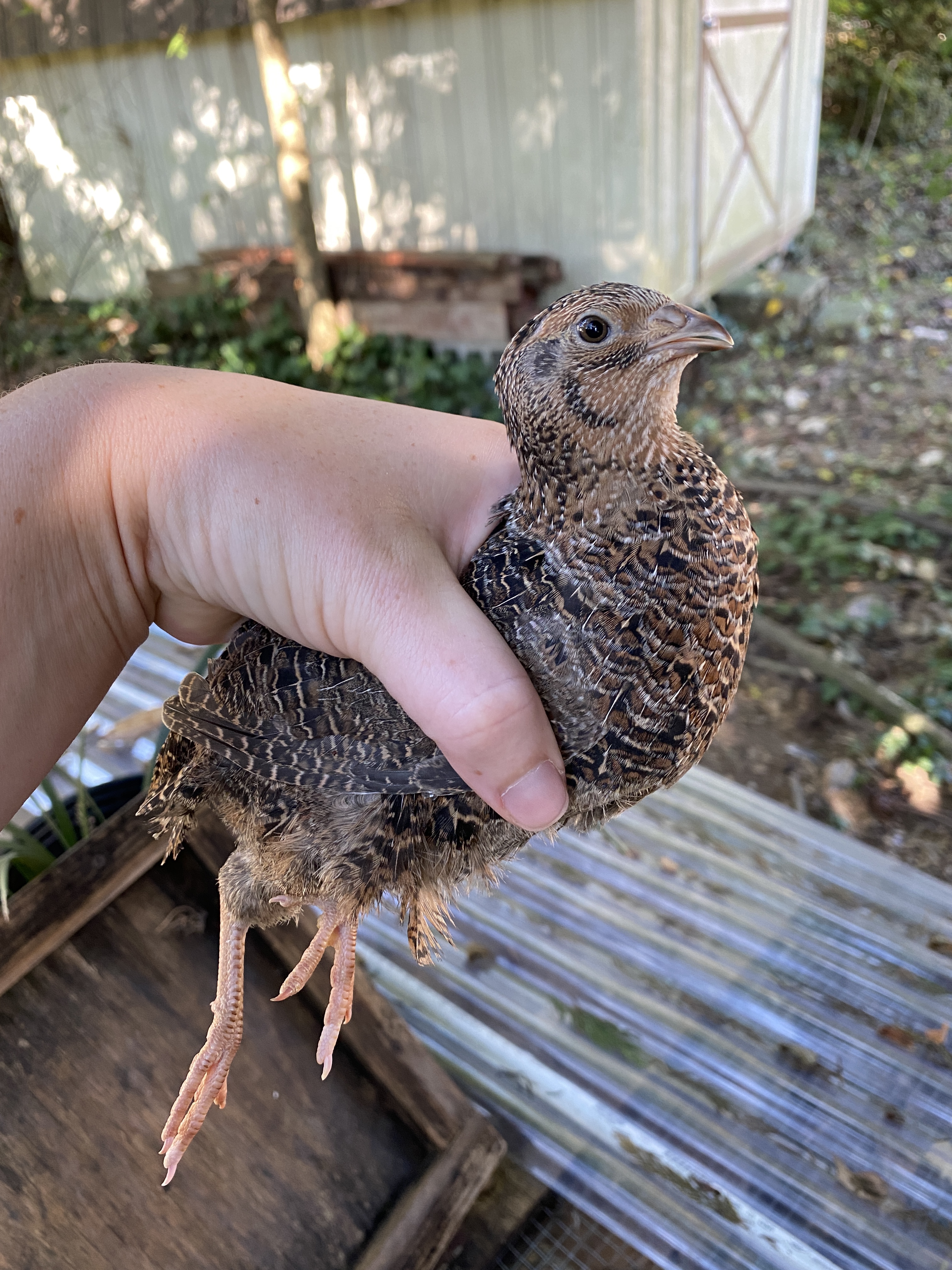
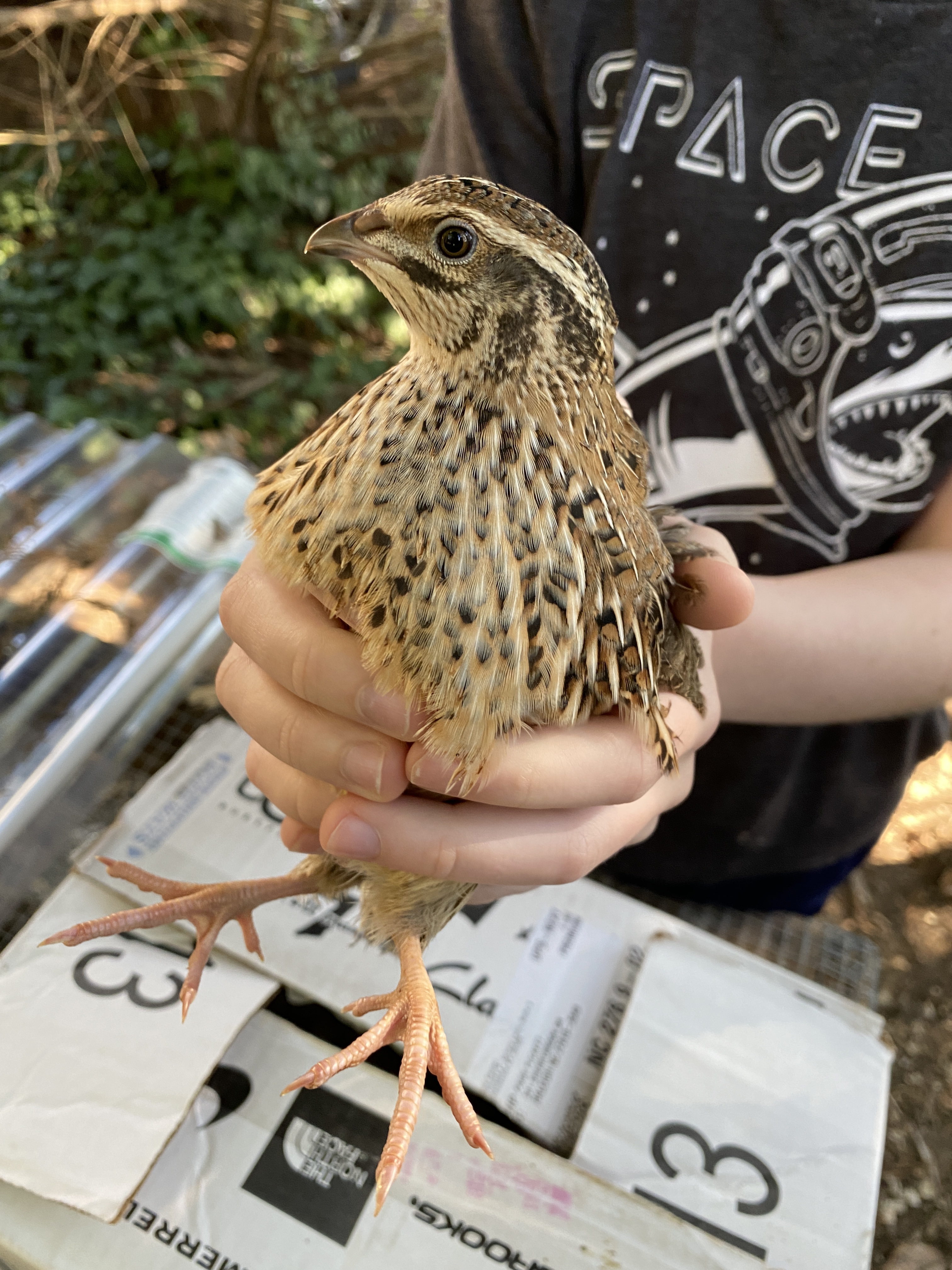
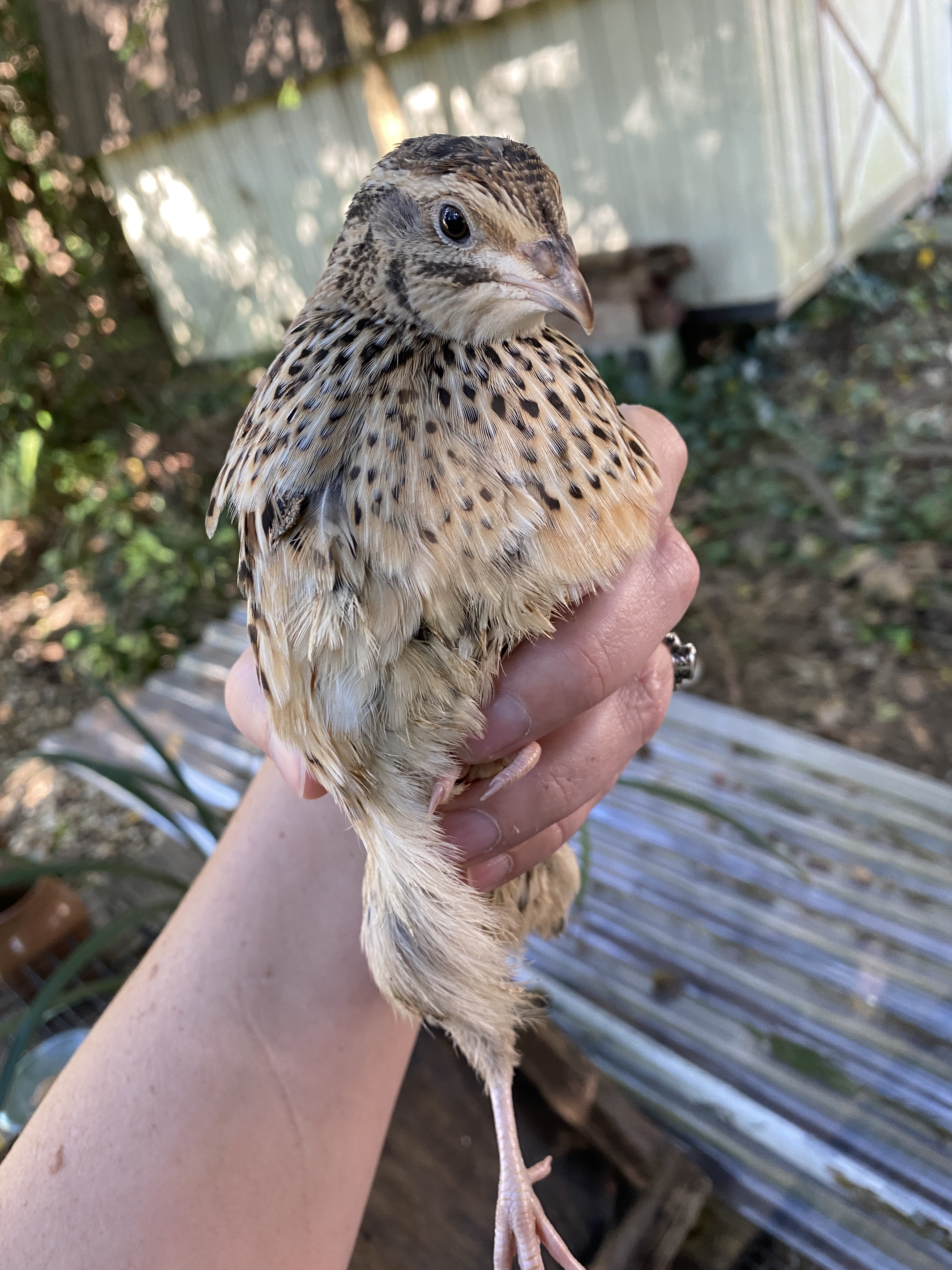
10 Coturnix Quail Facts:
- A group of quail are flocked a covey, flock or bevy.
- Coturnix are a Japanese breed of quail, which is classified as a game bird and not domestic fowl.
- They grow to be about 5″ tall and weigh 3-1/2 — 5-1/2.
- They are typically raised for eggs and meat and are very productive.
- Coturnix quail reach maturity quickly compared to chickens and can begin laying eggs in as few as 10 weeks.
- Approximately 3 quail eggs = 1 chicken egg, but the yolk to egg white ratio is higher in quail eggs.
- Pen height is very important. It either needs to be under 18″ to prevent flight or tall enough to allow safe flight. Quail take flight when startled (it’s called flushing), and they are prone to injury given the incorrect head room.
- Opposite of chickens, quail become less territorial the tighter the living conditions.
- Some coturnix can be feather-sexed. This means the sex can be determined from the feather colors or patterns.
- If keeping multiple males in a pen, the optimum ratio of females to male is at least 3:1 to prevent infighting amongst the males.
The great thing about getting started with quail is that it doesn’t require a lot of space, equipment or knowledge. All of it can be built upon as we go. Because the space requirements are so simple, I was able to repurpose a 3’x6′ grow-out pen we had build from scrap wood. It sits directly on the ground under the fig tree on the east side of our house. Against the house, it should be sheltered from wind and be slightly insulated. Because the tree is deciduous, it will get more sunlight and warmth in the winter and more shade in the summer to help with the heat. We are taking mental notes about how we would change the configuration to access and ease of cleaning if we were to build something new. Right now, it is nearly impossible to clean out the hardware cloth half of the pen. Hopefully decomposers will move in from the ground and start the composting process. Perhaps this will even benefit the tree? The covered portion has a nice, large door that allows us to easily sweep out the woodchips and refill the feeder. There are gaps where the hardware cloth wraps around wood posts, and those gaps can potentially trap a bird. Next build, all these things will be fixed.
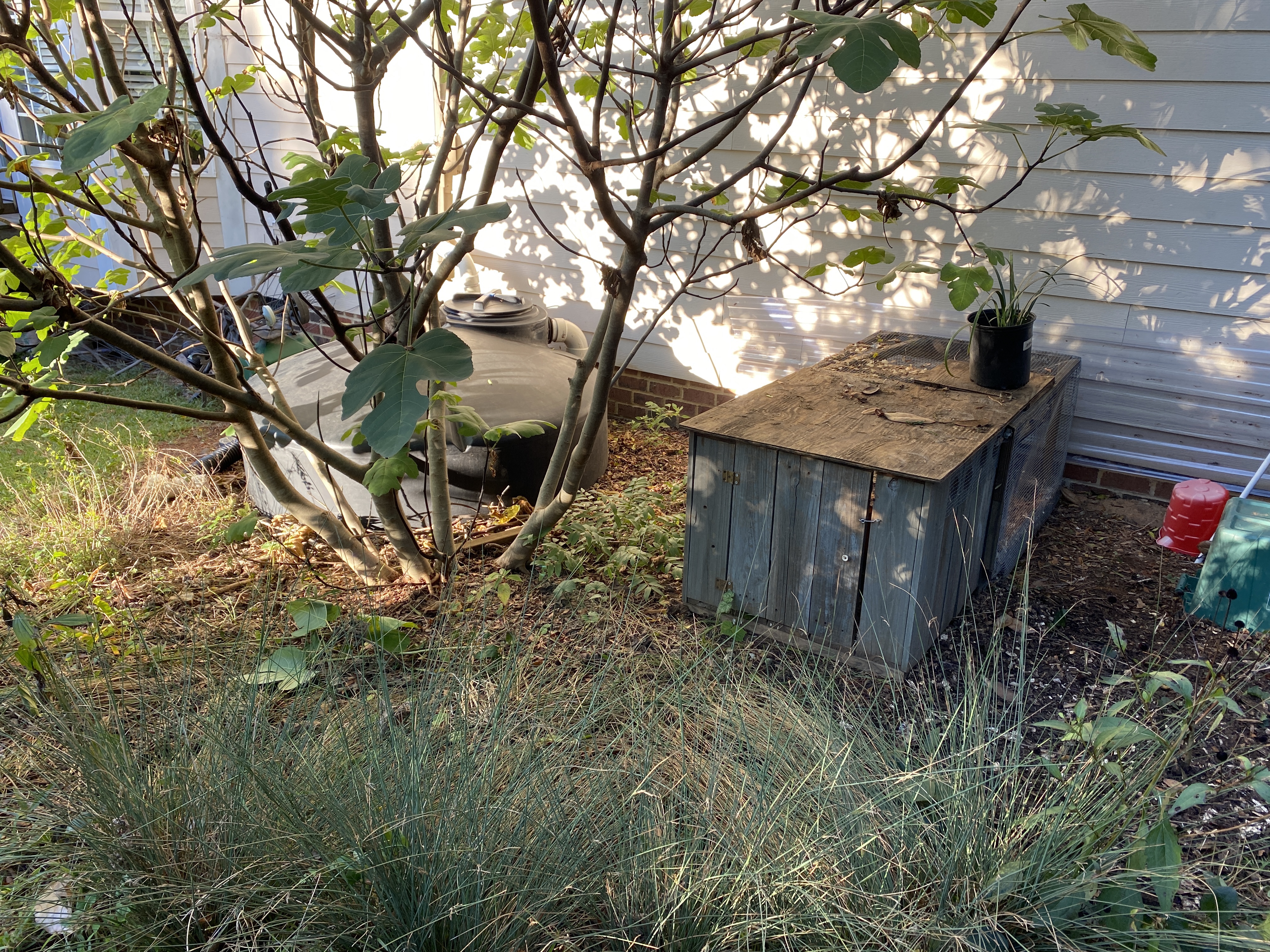

Two questions I didn’t ask myself before bringing them home, but I recommend thinking about:
- What is your goal of keeping quail? Eggs? Meat? Starting your own hatchery? Entertainment? Educational purposes?
The answers to these questions will influence the sizes of cages or semi-natural housing you create for them, whether you want to be able to interact with them, what enrichment activities you provide for them, whether you mix color lines and how much space each bird should get. - If eggs are your goal, what is the plan for the quail that go out of production in two years?
I haven’t ultimately decided what the long-range vision is for keeping quail at our home. I’m excited to get eggs, but I’m not sure I want to raise them for meat (note that most have already been named). These are similar issues chicken keepers have to address. My hens are all pets, and we continue to care for them after they stop laying. Quail lay for about 2 years but have a lifespan of 3 – 5 years.
With days getting shorting, the next thing on my plate is to install lights at the pen to give the quail longer daylight hours so they will begin laying! Hopefully there will be a egg report soon.
